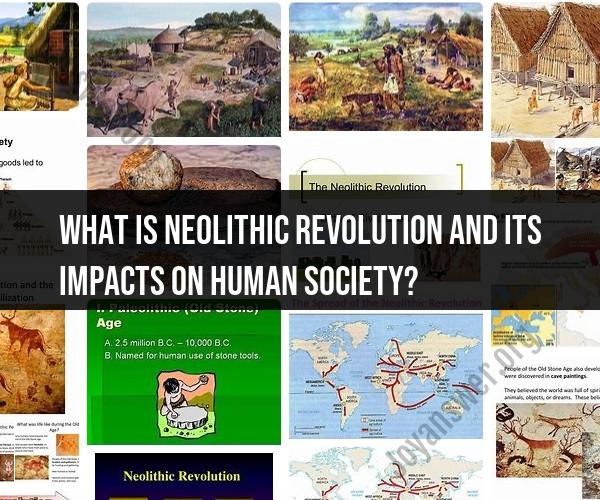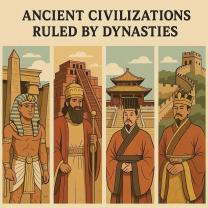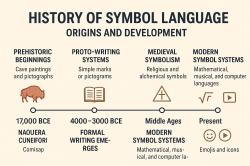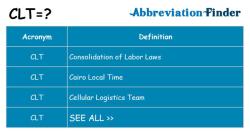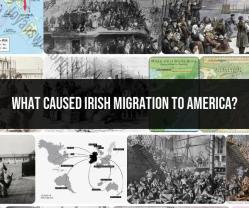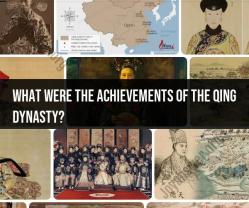What is Neolithic Revolution and its impacts on human society?
The Neolithic Revolution, often referred to as the Agricultural Revolution, was a significant turning point in human history that occurred around 10,000 to 12,000 years ago, marking the transition from a predominantly hunter-gatherer lifestyle to one based on agriculture and settled farming. This revolution had profound and far-reaching impacts on human society, including:
Development of Agriculture: The Neolithic Revolution marked the shift from a nomadic lifestyle of hunting and gathering to settled agriculture. People began cultivating crops like wheat, barley, rice, and legumes, as well as domesticating animals such as cows, goats, sheep, and pigs. This shift allowed for a more reliable and consistent food supply.
Food Surpluses: Farming led to increased food production and surpluses. This surplus food could be stored for future use, leading to more stable and larger populations. It also allowed some individuals to specialize in tasks other than food production, such as crafts, trade, and governance.
Sedentary Lifestyle: The development of agriculture enabled people to settle in one place for more extended periods. This sedentary lifestyle led to the establishment of permanent villages and later cities. It also allowed for the construction of more substantial and permanent structures.
Population Growth: With a more reliable food supply, the human population began to grow significantly. The ability to support larger populations laid the foundation for the growth of communities and the emergence of complex societies.
Social Stratification: As societies grew in size and complexity, social hierarchies began to develop. Some individuals and groups gained more power and wealth than others. This social stratification gave rise to the emergence of elites and class divisions.
Technological Advancements: The need to improve farming techniques and productivity led to technological innovations, such as the plow, irrigation systems, and the wheel. These innovations not only improved agriculture but also had broader applications in various aspects of society.
Trade and Specialization: With surplus food production, societies could engage in trade with neighboring communities. This trade facilitated the exchange of goods, ideas, and technologies and contributed to cultural diffusion. Specialization in different trades and crafts emerged as societies became more complex.
Development of Writing and Record-Keeping: As societies grew more complex, the need for record-keeping and communication increased. This led to the development of writing systems, which played a crucial role in the organization and governance of early civilizations.
Urbanization: The Neolithic Revolution laid the groundwork for the growth of urban centers. The surplus food supply and specialization of labor allowed for the development of cities, which became centers of culture, governance, and trade.
Environmental Impact: The shift to agriculture had significant environmental consequences. Deforestation, soil erosion, and other environmental changes resulted from agricultural practices. These changes had both positive and negative impacts on the environment.
Overall, the Neolithic Revolution transformed human societies from small, mobile groups of hunter-gatherers into larger, more complex, and more settled civilizations. It marked the beginning of agriculture-based societies and laid the foundation for many aspects of modern human civilization, including technology, culture, governance, and social organization.
Unearthing the Neolithic Revolution: Its Historical Significance
The Neolithic Revolution, also known as the Agricultural Revolution, was one of the most important events in human history. It marked the transition from a hunter-gatherer lifestyle to a more settled agricultural lifestyle. This transition had a profound impact on human societies, leading to the development of larger settlements, complex social structures, and new technologies.
The Neolithic Revolution began around 10,000 BCE in the Fertile Crescent region of the Middle East. It was here that humans first domesticated plants and animals, such as wheat, barley, sheep, and goats. This allowed them to produce more food than they needed to survive, which led to a population boom.
As the population grew, people began to settle in larger villages and towns. This led to the development of new social structures, such as social hierarchy, division of labor, and trade. The Neolithic Revolution also saw the development of new technologies, such as pottery, weaving, and metalworking.
The Neolithic Revolution had a profound impact on human societies. It allowed humans to produce more food, live in larger settlements, and develop new technologies. This led to the rise of civilization and the development of complex societies.
Impact of the Neolithic Revolution on Human Societies
The Neolithic Revolution had a profound impact on human societies in a number of ways. Here are some of the most significant impacts:
- Increased food production: The Neolithic Revolution led to a significant increase in food production. This was due to the domestication of plants and animals, as well as the development of new agricultural techniques. The increased food production allowed human populations to grow and larger settlements to develop.
- Settled life: The Neolithic Revolution led to the transition from a nomadic hunter-gatherer lifestyle to a more settled agricultural lifestyle. This was due to the need to cultivate crops and tend to livestock. Settled life allowed for the development of more complex social structures and new technologies.
- Population growth: The increased food production and settled life led to a population boom. This was due to the fact that people were living longer and having more children. The population growth led to the development of larger settlements and towns.
- Social complexity: The Neolithic Revolution led to the development of more complex social structures. This was due to the need to organize and manage larger populations. Complex social structures included social hierarchy, division of labor, and trade.
- Technological development: The Neolithic Revolution led to the development of new technologies, such as pottery, weaving, and metalworking. These new technologies allowed humans to produce more goods, live more comfortably, and develop new forms of art and culture.
Agricultural Revolution and Beyond: How the Neolithic Era Shaped Civilization
The Neolithic Revolution was the foundation upon which civilization was built. The increased food production, settled life, and population growth that it brought about allowed for the development of more complex social structures, new technologies, and new forms of art and culture.
The Neolithic Era also saw the development of some of the earliest civilizations, such as Mesopotamia and Egypt. These civilizations were characterized by their large populations, complex social structures, and advanced technologies.
The Neolithic Revolution had a profound impact on the course of human history. It allowed humans to transition from a nomadic hunter-gatherer lifestyle to a more settled agricultural lifestyle. This transition led to the development of civilization and the rise of complex societies.
The Neolithic Revolution was a truly transformative event in human history. It shaped the world we live in today in countless ways.
